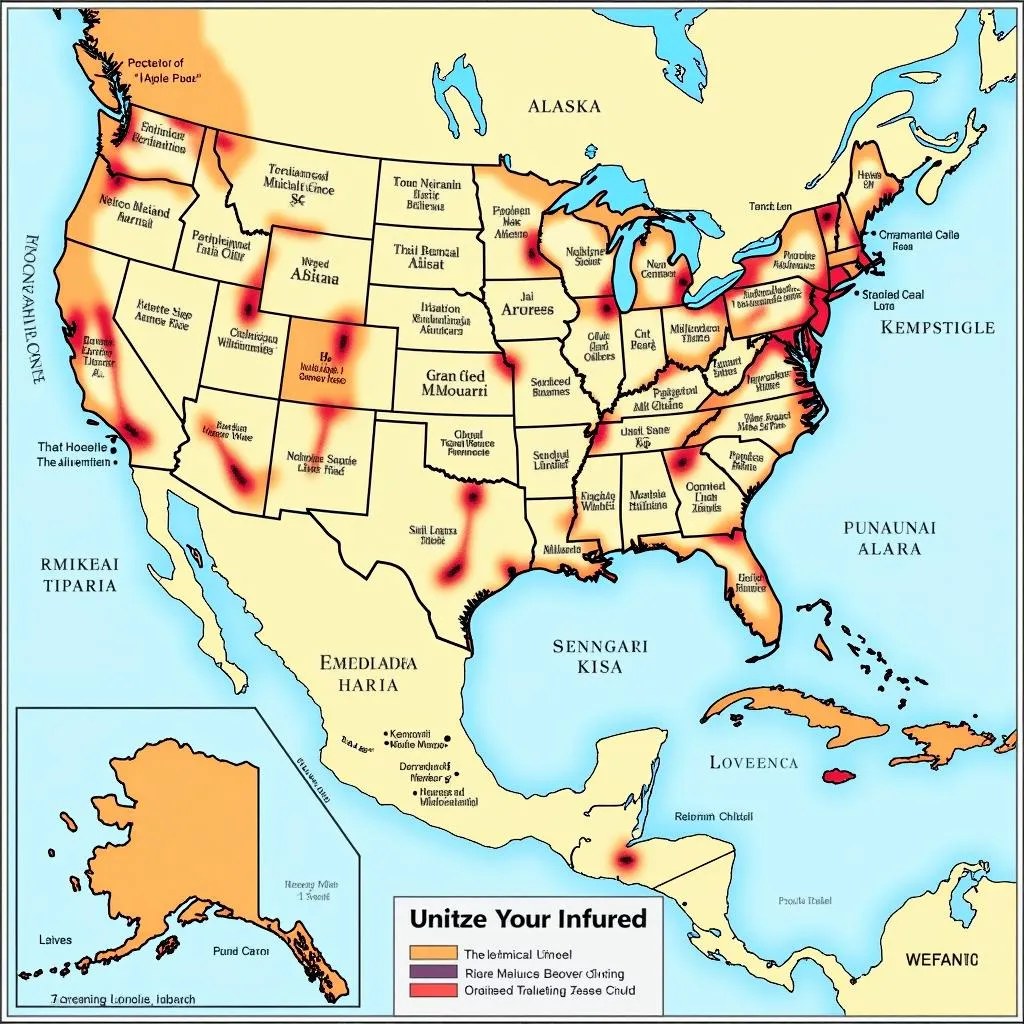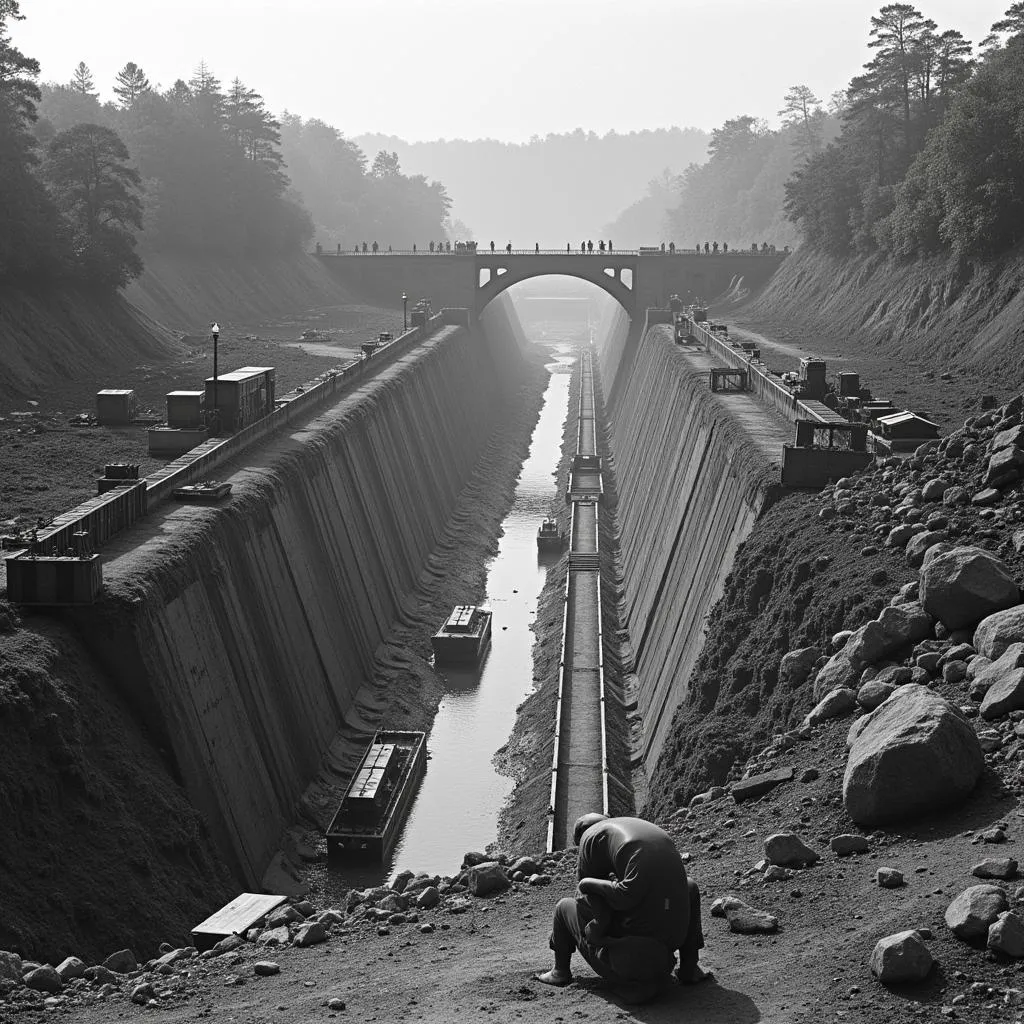The year 1914 marked a pivotal moment in global history, with the outbreak of World War I reshaping the geopolitical landscape. At the dawn of this tumultuous era, the United States, while not yet a dominant military power on the world stage, possessed a growing territorial influence that extended far beyond its contiguous borders. This article delves into the reach of U.S. territorial influence in 1914, examining the historical context, key acquisitions, and the implications of this expansion.
 Map of U.S. Territorial Influence in 1914
Map of U.S. Territorial Influence in 1914
Manifest Destiny and the Spanish-American War: Seeds of Expansion
The seeds of U.S. territorial expansion in the late 19th and early 20th centuries can be traced back to the concept of Manifest Destiny, a belief that American expansion across North America was both justified and inevitable. This ideology, fueled by a sense of national exceptionalism and a desire for economic and strategic growth, led to westward expansion across the continent, often at the expense of Native American populations.
The Spanish-American War in 1898 marked a turning point, propelling the United States onto the global stage as an imperial power. The war, sparked by the sinking of the USS Maine in Havana harbor, resulted in a decisive American victory over Spain. As a result, the United States gained control of key territories, including Puerto Rico, Guam, and the Philippines, significantly expanding its influence in the Caribbean and the Pacific.
The Panama Canal and Strategic Interests
The construction of the Panama Canal, completed in 1914, stands as a testament to U.S. engineering prowess and its growing global ambitions. The canal, a monumental feat of engineering, connected the Atlantic and Pacific Oceans, revolutionizing global trade and naval strategy. The United States, recognizing the strategic importance of this waterway, secured control over the Panama Canal Zone, a strip of land surrounding the canal, further solidifying its presence in the region.
 Construction of the Panama Canal
Construction of the Panama Canal
Economic and Political Motivations
U.S. territorial expansion during this period was driven by a complex interplay of economic and political factors. The acquisition of new territories provided access to valuable resources, new markets for American goods, and strategic locations for military bases. The expansion also served to enhance American prestige on the world stage, positioning the United States as a rising power.
The Legacy of Expansion: A Mixed Bag
The legacy of U.S. territorial influence in 1914 is a complex one, marked by both progress and controversy. While expansion brought about economic growth and strategic advantages, it also raised questions about imperialism, self-determination, and the rights of colonized peoples. The U.S. would grapple with these issues throughout the 20th century, shaping its role in global affairs.
Conclusion
U.S. territorial influence in 1914 reflected a nation on the rise, projecting its power and influence far beyond its borders. Driven by a mix of Manifest Destiny, economic ambitions, and strategic considerations, the U.S. had acquired a string of territories, from the Caribbean to the Pacific. The legacy of this expansion continues to shape the United States’ relationship with the world today, a reminder of the complex interplay of power, ideology, and historical forces that have shaped the nation’s trajectory on the global stage.
Frequently Asked Questions
1. What were the main reasons for U.S. territorial expansion in the late 19th and early 20th centuries?
The main drivers were Manifest Destiny, economic opportunities, strategic considerations, and a desire for global prestige.
2. How did the Spanish-American War change the U.S.’s global standing?
The war marked the U.S.’s emergence as an imperial power, granting it control over territories in the Caribbean and the Pacific.
3. Why was the Panama Canal so important to the United States?
The canal revolutionized global trade and naval strategy, and the U.S. secured control over the Panama Canal Zone to protect its interests.
4. What were some of the negative consequences of U.S. territorial expansion?
Expansion raised ethical questions about imperialism and the rights of colonized people, sparking debates that continue today.
5. How does the legacy of U.S. territorial influence in 1914 affect the country today?
The legacy continues to shape U.S. foreign policy and its relationships with other nations, particularly in regions where it once held territories.
Need More Information?
Have more questions about U.S. history or global affairs? Check out our other informative articles or reach out to our team. We’re here to help you explore the past and understand the present.
Contact Us
For any inquiries or assistance, please contact us at:
Phone: 0909802228
Email: doibongda@gmail.com
Address: 101 Đ. Lý Chiêu Hoàng, Phường 10, Quận 6, Hồ Chí Minh, Việt Nam.
Our dedicated customer support team is available 24/7 to assist you.